

IN MEMORy by Pierre Vandervelden
The visit of Commonwealth graves in Communals Cemeteries & Churchyards in Belgium & France
THE HUTS Cemetery (Dikkebus) (West Vlaanderen Belgium)
Page 1 The Pictures
Page 2 List of Casualties
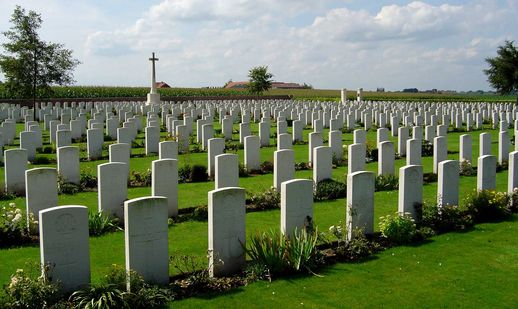 |
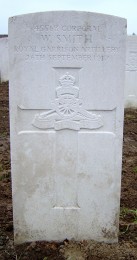 |
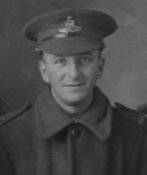 |
| Cpl William Smith 26/09/1917 | |
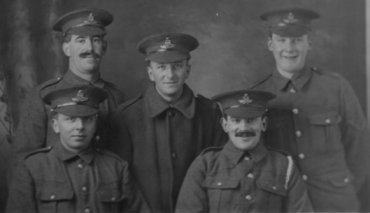 |
|
| Five comrades of Leyburn, Yorkshire,
joined up together in August 1914. Top: Francis Joseph Wilson - William Smith - John Alan Watson Down: Fred Langstaff - Warrinder Bowes Francis Joseph Wilson MM & Bar Joe wanted to be an engineer but had to take over his father's drapers shop, he survived the War and died 28/12/1930 Fred Langstaff Fred was from Spennithorne, he survived the War Warrinder Bowes Son of a Leyburn butcher, he survived the War John Alan Watson John enlisted as Gunner and survived the War as Lieutenant. |
|
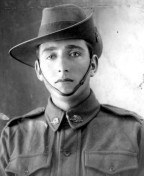 |
|
| George Grainger Watson George, Alan's brother, was born in Monk, Hesleden, Durham, England 06/1894, he enlisted in The Australian Army, 29/12/1914 and survived the War. Alan and George had a cousin, Norman John McMorrin, buried at Aveluy Communal Cemetery Extension |
|
| For Phil Watson, Grandson of John Alan. http://www.soar100.freeserve.co.uk/ |
|
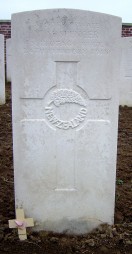 |
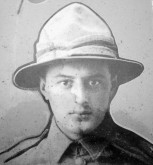 |
| Pte Victor Manson Spencer 24/02/1918 aged 23 | |
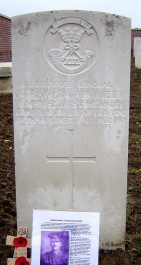 |
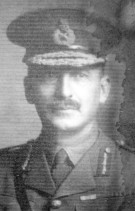 |
| Brig./Gnl Cecil Godfrey Rawling CMG CIE DSO KIA 28/10/1917 aged 47 | |
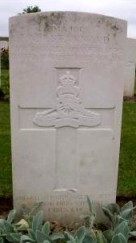 |
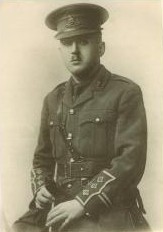 |
| Mjr Alexander Jewell Stannard 20/08/1917 He was born 05/08/1891 For Avalon Eastman Oundle School Roll of Honour |
|
 |
|
| Gnr Sydney Frank Loughlin
MM 17/10/1917 aged 23 His cousins, Lt Victor Wentworth Robins and Sgt Albert Bates are respectively buried in Hermies Hill Brit. Cem and Heilly Station Cem. for Helen Watt nee Cook and family |
|
 |
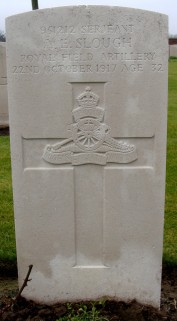 |
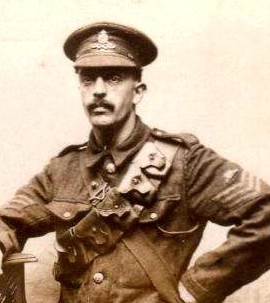 |
| Fitter Sgt Albert Edward Slough 22/10/1917
aged 32 Albert left a widow Ellen and four sons, Albert, Arthur, William and Peter. He was in the R.A.M.C. ( T ) for 4 years. In 1915 he re-enlisted in the R.F.A. first as a Driver then as a Fitter Sergeant in 1917 In A. 18th London R.F.A. Brigade. In civilian life he was a fitter at the Nugget Polish Company, Kennington, S.E. London. for his grandson John Slough (William's son), Master Gunmaker |
||
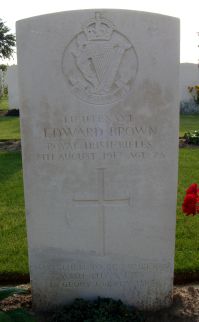 |
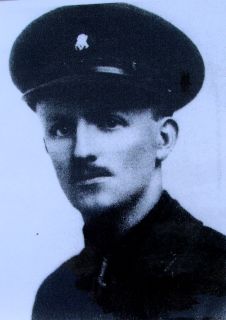 |
| Lt Edward Brown 07/08/1917 aged 25 | |
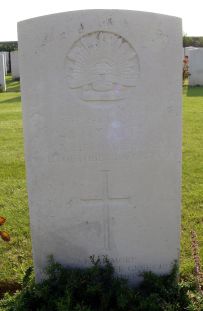 |
 |
| Gnr Francis Joseph Hall 29/10/1917 aged 23 | |
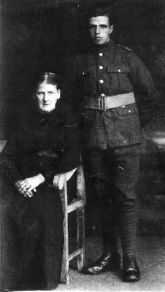 |
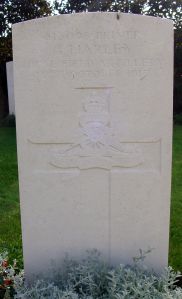 |
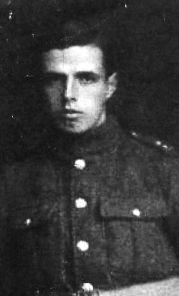 |
| Dvr George Harley 15/10/1917 aged 20 for his great nephew Martin Harley and family |
||
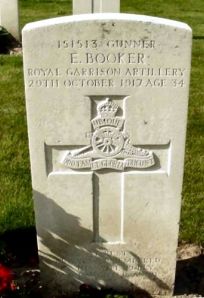 |
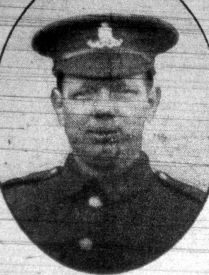 |
| Gnr Ernest Booker 29/10/1917 Ernest was a married man residing at 49, Portland Street, Walsall with his wife and child. He enlisted in the Army at Walsall on Tuesday 27/03/1917 and was drafted to France in 08/1917. At the time of his enlistment he was employed at a local brewery. Ernest’s battery was situated at Zillebeke at the time of his death, the War Diary recording: "29 October 1917 - During an aeroplane shoot the battery was heavily shelled by 5.9 inch. One fell in the gun detachment, killing Sgt. Johnson and 2 men, and wounded 6 men.” for Graeme Clarke and the people of Walsall |
|
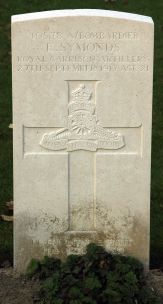 |
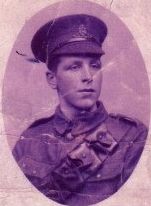 |
| A/Bmb Edward Symonds 27/09/1917 aged
21 for his great nephew Peter Symonds |
|
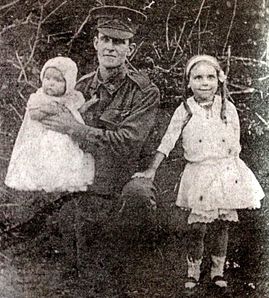 |
| Spr Thorne North 19/09/1917 aged 27 He left a widow, Elisabeth Jane and two daughters Marge and Kath. Former miner, he enlisted on 27/3/1916. He died of wounds received in action on 18/09/1917 at the 1st Australian Field Ambulance. for his nephew Peter Fielding and Mark Robinson |
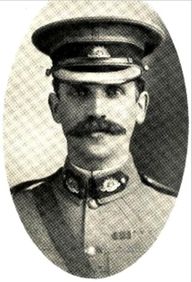 |
| Col (Dr) William Weston Hearne DSO
17/10/1917 William Hearne was born on 07/02/1871 at Bega, NSW, the son of William Goodall Hearne and Amelia nee Sykes. He was educated at Geelong College, then studied Medicine at the University of Melbourne, commencing in 1889, and was physician to OP and Clinical Instructor at the Alfred Hospital. He served as a Surgeon Lieutenant in the Boer War, and was awarded the Queen’s South African Medal. In 1904, he married Alice May Grubb (1873-1943) in New South Wales, and they resided at 9 Royal Terrace, Nicholson Street, Fitzroy, having had one son, William Beaumont Weston Hearne (1905-1996), born in South Melbourne on 05/07. He was one of the first six doctors to enlist for the Great War, on 20/08/1914, and sailed from Melbourne on 19/10 on HMAT A18 Wiltshire as a Major in 2nd Field Ambulance. Promoted Lieutenant Colonel on 26/07/1915, he transferred to 3rd Field Ambulance on 19/08/1915, and was ADMS 1st Division on Gallipoli on 16/09. He returned to 3rd Field Ambulance on 17/11, and then to 2nd Field Ambulance on 01/01/1916. His next posting was as ADMS 5th Division on 23/11/1916, and he was promoted Colonel on 09/06/1917. He was promoted a Companion of the Distinguished Service Order, gazetted on 04/06/1917, the citation read: "During operations near Gueudecourt on the night of 4th/5th November 1916 Lieutenant Colonel Hearne displayed great courage and resources in the collection and evacuation of the wounded. On the early morning of the 5th November he supervised the collection of wounded, during this time his party was under shell, rifle and machine gun fire, incurring some casualties. This officer collected and tended wounded in No Man’s Land, and placed them in a deserted German dug-out, while it was impossible, owing to the fire, to bring them in during daylight. At this time he was in charge of the 2nd Field Ambulance, AAMC. Since he has been ADMS of this Division he has carried out his duties with energy and ability and has given every satisfaction." He was promoted Cavalier of the Order of St Maurice and St Lazarus (Italian), gazetted on 26/05/1917; and awarded the Medaille de la Reconnaisance Francaise, he was also Mentioned in Sir Douglas Haig’s Despatches five times, four of these were gazetted on 13/11/1916; 04/01/1917; 01/06/1917; and 28/12/1917. C E W Bean wrote from France of the circumstances of Hearne’s demise: "An Australian who was known to everyone from the days when he commanded the 2nd Field Ambulance in the force which left Egypt for Gallipoli, and who, after looking death in the face far more often than was realised, except by those who knew him intimately, was Colonel W W Hearne. He held a high staff appointment at the time of his death, but he made it his business to know every part of the work which was under him, and it was his practice to visit points in the battle front where it is unusual for officers in his position to make regular visits. During the fight at Bullecourt, having some point of criticism to pass upon some arrangements of a junior officer, he did not write a slashing letter calling for an explanation. He went himself to the front line and saw the officer in question, and by these means found that the miscarriage was a mistake, and that another man, if any, was responsible. It was in going between two of his most advanced aid posts on the Broodseinde Ridge that Colonel Hearne was killed. He was with a companion when a shell fell some distance behind them, the officer in front looked round and saw his senior lying on the path behind him. A stray fragment had penetrated his heart. His division lost a fearless, gallant gentleman." for his great granddaughter Belinda Hearne |
| The AWM Collection holds a series of photographs which include W W Hearne, lent by Lt Colonel Quick, in such sites as Mena Camp and Gallipoli. |
| Sources: Based on an edited extract from Geelong Collegians at the Great World War compiled by James Affleck. pp 52-53 (citing The University of Melbourne: Record of Active Service of Teachers, Graduates, Undergraduates, Officers and Serv-ants (1926); AWM H19194; C01629; C01633; C01668; C01681; C01683; C01728; C01741; Commonwealth War Graves Commission; Photo Pegasus December 1917. |
1 088 casualties
IF You have a casualty picture,
please send me a copy, I'll be glad to show it on this page.
IF You want a king size copy of this picture (300/900 ko - 2592/1944 pixels) please e-mail me.
Casualties informations come usualy from Commonwealth War Graves Commission, see links for more informations
Inmemories.com © Pierre Vandervelden - Belgium